Chandrashekharbiswas
On this page, you find all documents, package deals, and flashcards offered by seller chandrashekharbiswas.
- 24
- 0
- 0
Community
- Followers
- Following
24 items
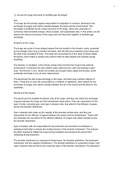
How are the lungs structured to facilitate gas exchange
The lungs are the primary organs of respiration in humans, responsible for exchanging gases between the body and the environment. They are composed of a complex network of airways, alveoli (small air sacs), and blood vessels. The air we breathe in enters the lungs through the trachea, which divides into two bronchi that lead to the lungs. These bronchi then divide into smaller bronchioles, which eventually lead to the alveoli. The alveoli are the site of gas exchange, where oxygen from the ai...
- Class notes
- • 3 pages •
The lungs are the primary organs of respiration in humans, responsible for exchanging gases between the body and the environment. They are composed of a complex network of airways, alveoli (small air sacs), and blood vessels. The air we breathe in enters the lungs through the trachea, which divides into two bronchi that lead to the lungs. These bronchi then divide into smaller bronchioles, which eventually lead to the alveoli. The alveoli are the site of gas exchange, where oxygen from the ai...
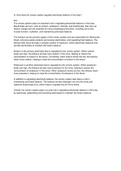
How does the urinary system regulate electrolyte balance in the body?
The urinary system plays a critical role in regulating electrolyte balance in the body. Electrolytes are minerals, such as sodium, potassium, chloride, and bicarbonate, that are necessary for proper cellular function. The kidneys filter electrolytes from the blood and either reabsorb them back into the body or excrete them in urine, depending on the body's needs. This process is tightly regulated by hormones, such as aldosterone and antidiuretic hormone (ADH), which control the reabsorption of s...
- Class notes
- • 1 pages •
The urinary system plays a critical role in regulating electrolyte balance in the body. Electrolytes are minerals, such as sodium, potassium, chloride, and bicarbonate, that are necessary for proper cellular function. The kidneys filter electrolytes from the blood and either reabsorb them back into the body or excrete them in urine, depending on the body's needs. This process is tightly regulated by hormones, such as aldosterone and antidiuretic hormone (ADH), which control the reabsorption of s...

What is the role of the liver in the body's metabolism and detoxification?
The liver plays a vital role in the body's metabolism and detoxification processes. It is responsible for breaking down and processing nutrients from food, producing bile to aid in digestion, and filtering out harmful substances from the blood. The liver also helps to metabolize medications and drugs, converting them into forms that can be excreted from the body. Additionally, the liver plays a critical role in the body's detoxification processes by removing toxins and waste products from the bl...
- Class notes
- • 2 pages •
The liver plays a vital role in the body's metabolism and detoxification processes. It is responsible for breaking down and processing nutrients from food, producing bile to aid in digestion, and filtering out harmful substances from the blood. The liver also helps to metabolize medications and drugs, converting them into forms that can be excreted from the body. Additionally, the liver plays a critical role in the body's detoxification processes by removing toxins and waste products from the bl...
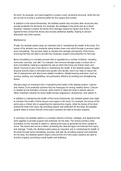
How does the skeletal system provide support and protection for the body?
The skeletal system is a complex network of bones, joints, and connective tissues that provide support and protection for the body. The bones serve as a rigid framework that gives the body its shape and structure, while also providing support for muscles and organs. Additionally, the skeletal system protects vital organs such as the brain, heart, and lungs by forming a strong, bony barrier around them. Furthermore, the bones also play a crucial role in movement, providing attachment points for m...
- Class notes
- • 1 pages •
The skeletal system is a complex network of bones, joints, and connective tissues that provide support and protection for the body. The bones serve as a rigid framework that gives the body its shape and structure, while also providing support for muscles and organs. Additionally, the skeletal system protects vital organs such as the brain, heart, and lungs by forming a strong, bony barrier around them. Furthermore, the bones also play a crucial role in movement, providing attachment points for m...
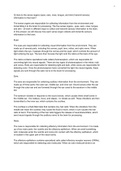
How do the sense organs (eyes, ears, nose, tongue, and skin) transmit sensory information to the brain?
The sense organs play a vital role in our ability to perceive and respond to our environment. When these organs are stimulated by external stimuli such as light, sound, odor, taste, or touch, they send signals to the brain through specialized nerve cells called sensory receptors. These receptors convert the sensory information into electrical signals, which are transmitted along sensory neurons to the central nervous system. The sensory neurons then synapse with other neurons in specific regions...
- Class notes
- • 3 pages •
The sense organs play a vital role in our ability to perceive and respond to our environment. When these organs are stimulated by external stimuli such as light, sound, odor, taste, or touch, they send signals to the brain through specialized nerve cells called sensory receptors. These receptors convert the sensory information into electrical signals, which are transmitted along sensory neurons to the central nervous system. The sensory neurons then synapse with other neurons in specific regions...
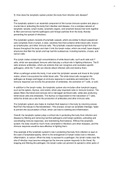
How does the lymphatic system protect the body from infection and disease?
The lymphatic system is a network of vessels and organs that helps protect the body from infections and diseases. It does so by filtering out harmful pathogens, such as bacteria and viruses, from the lymphatic fluid and producing specialized white blood cells called lymphocytes, which can recognize and destroy these pathogens.
- Class notes
- • 2 pages •
The lymphatic system is a network of vessels and organs that helps protect the body from infections and diseases. It does so by filtering out harmful pathogens, such as bacteria and viruses, from the lymphatic fluid and producing specialized white blood cells called lymphocytes, which can recognize and destroy these pathogens.
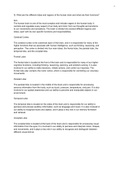
What are the different lobes and regions of the human brain and what are their functions?
The human brain is divided into four main lobes: the frontal, parietal, temporal, and occipital lobes. Each lobe has specific regions that control different functions such as movement, sensation, perception, language, memory, and emotion.
- Class notes
- • 2 pages •
The human brain is divided into four main lobes: the frontal, parietal, temporal, and occipital lobes. Each lobe has specific regions that control different functions such as movement, sensation, perception, language, memory, and emotion.
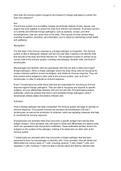
How does the immune system recognize and respond to foreign pathogens to protect the body from infection?
.
- Class notes
- • 3 pages •
.
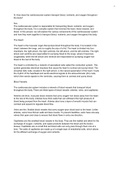
How does the cardiovascular system transport blood, nutrients, and oxygen throughout the body?
.
- Class notes
- • 3 pages •
.
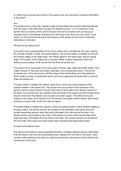
What is the structure and function of the spinal cord and how does it transmit information to the brain?
.
- Class notes
- • 3 pages •
.
